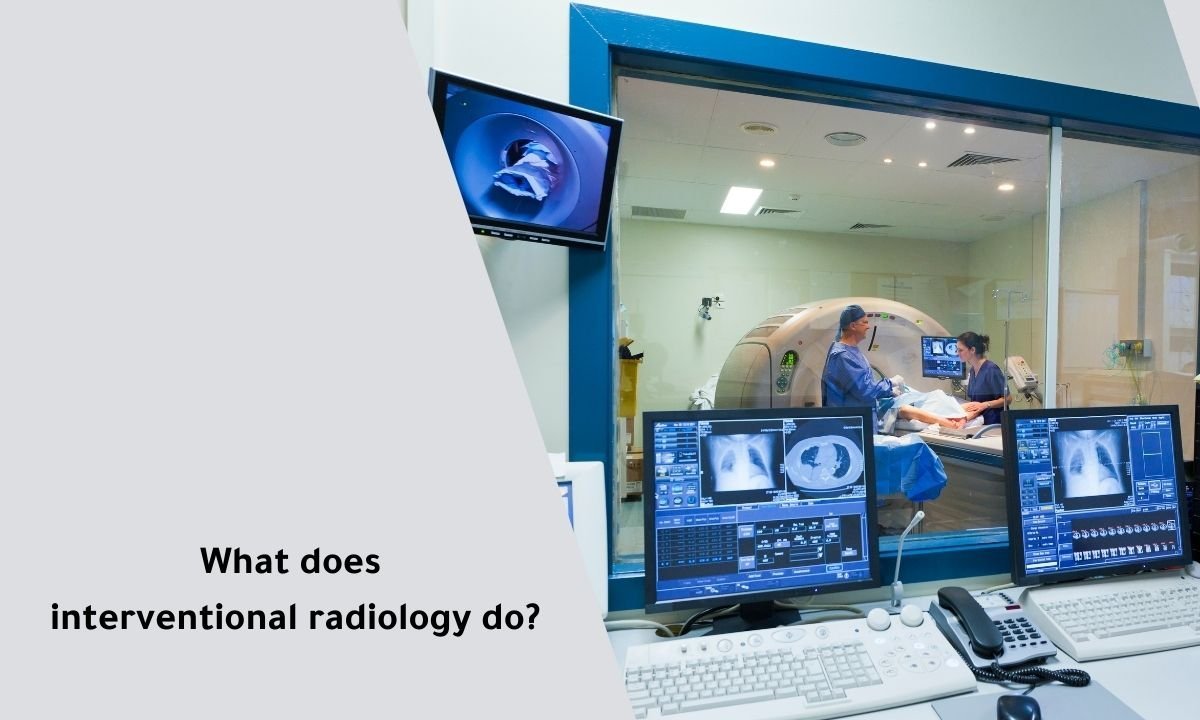If you’ve ever wondered what procedures are done in interventional radiology, you’re not alone — and the answer might surprise you. From treating tumors without surgery to stopping internal bleeding in minutes, interventional radiology uses cutting-edge imaging to guide tiny tools inside the body, offering powerful solutions with less pain, less risk, and faster recovery 🕒.

What is Interventional Radiology?
Imagine treating serious health issues without the need for major surgery, long recovery times, or hospital stays. That’s exactly what interventional radiology offers — modern, image-guided techniques that get the job done faster, safer, and more effectively than traditional surgery. Whether it’s stopping internal bleeding or treating cancerous tumors, this field is changing lives — one minimally invasive procedure at a time.
Interventional Radiology (IR) is a medical subspecialty that uses real-time imaging (like ultrasound, CT, or fluoroscopy) to guide tiny instruments such as needles, catheters, and wires through the body to diagnose or treat various conditions.
Unlike conventional surgery, these procedures are minimally invasive, often requiring only a small incision — or none at all.
Why Choose Interventional Radiology?
- Reduced hospital stay
- Less pain and faster recovery
- No general anesthesia required
- Performed in outpatient settings
- High precision with imaging guidance
Common Procedures in Interventional Radiology
1. Angiography and Angioplasty
Used to detect and treat narrowed or blocked blood vessels, especially in the heart or legs.
- Angiography uses X-rays and contrast dye to visualize arteries.
- Angioplasty involves inflating a small balloon to open the narrowed vessel, often followed by stent placement.
2. Embolization Techniques
These procedures block abnormal blood flow to control:
- Internal bleeding
- Tumors (e.g., uterine fibroid embolization)
- Vascular malformations
- Liver or kidney cancer (chemoembolization)
3. Image-Guided Biopsies 🔬
Radiologists use ultrasound or CT to guide a needle to extract tissue samples from areas such as:
- Liver
- Lungs
- Kidneys
- Bone
This allows accurate diagnosis without surgical exploration.
4. Drainage and Abscess Management
- Fluid collections, abscesses, or infected cysts can be drained using catheters.
- Minimizes the need for open drainage surgery.
- Often used for liver abscesses, abdominal infections, and pelvic fluid.
5. Dialysis Access Procedures
Creating or maintaining access for dialysis in patients with kidney failure, such as:
- AV fistula maintenance
- Central venous catheter placement
- Balloon angioplasty for blocked dialysis access
Cancer Treatments in Interventional Radiology
Interventional radiology plays a growing role in oncology, providing targeted therapies such as:
Tumor Ablation
Destroys tumors using:
- Radiofrequency ablation (RFA)
- Microwave ablation (MWA)
- Cryoablation (freezing tumors)
Effective for liver, kidney, lung, or bone tumors.
Chemoembolization and Radioembolization
- Combines chemotherapy or radiation with embolization.
- Used primarily in liver cancer to shrink tumors with minimal side effects.
Urgent and Emergency Interventions
Bleeding Control
- Life-threatening internal hemorrhages can be managed by inserting coils or embolic agents via catheter.
Trauma Cases
- Interventional radiologists are often part of trauma teams to treat vascular injuries without open surgery.
Gastrointestinal and Genitourinary Procedures
- Percutaneous nephrostomy: drains urine from a blocked kidney
- Biliary drainage: relieves jaundice from bile duct obstruction
- Feeding tube placement (gastrostomy): for patients unable to eat normally
Bone and Spine Interventions
- Vertebroplasty/Kyphoplasty: treat spine fractures with cement injection
- Bone biopsies: diagnose infections or tumors
Tools and Imaging Used
- Ultrasound for real-time guidance
- CT scans for deep tissue access
- Fluoroscopy/X-ray for dynamic monitoring
- MRI in selected complex interventions
IR specialists use cutting-edge tools like catheters, guide wires, stents, and microcoils to navigate the body internally with unmatched precision.
Who Performs These Procedures?
Interventional procedures are carried out by interventional radiologists — physicians who have undergone extensive training in both diagnostic imaging and minimally invasive therapy.
They collaborate with other specialists to offer comprehensive, patient-centered care.
Is It Safe?
Yes ✅
These procedures are often safer than surgery, with:
- Fewer complications
- Less blood loss
- Shorter recovery times
- Minimal scarring
How to Prepare for a Procedure?
- You’ll receive pre-care instructions including any fasting or medication guidelines.
- Most interventions are day procedures, with patients returning home the same day.
Who Can Benefit?
- Cancer patients needing targeted therapy
- Individuals with chronic vascular conditions
- Women with fibroids wanting a surgical alternative
- Patients unfit for surgery due to age or other health issues
Interventional radiology isn’t just a medical specialty — it’s a modern solution for conditions once thought to require major surgery. Whether you’re managing chronic illness, seeking a less invasive option, or dealing with an emergency, this field offers cutting-edge treatments with real results.
💬 Want to learn which interventional radiology procedure is right for your case? Contact Dr. Samir Abdelghaffar’s clinic today for expert consultation and personalized guidance.
 العربية
العربية 
